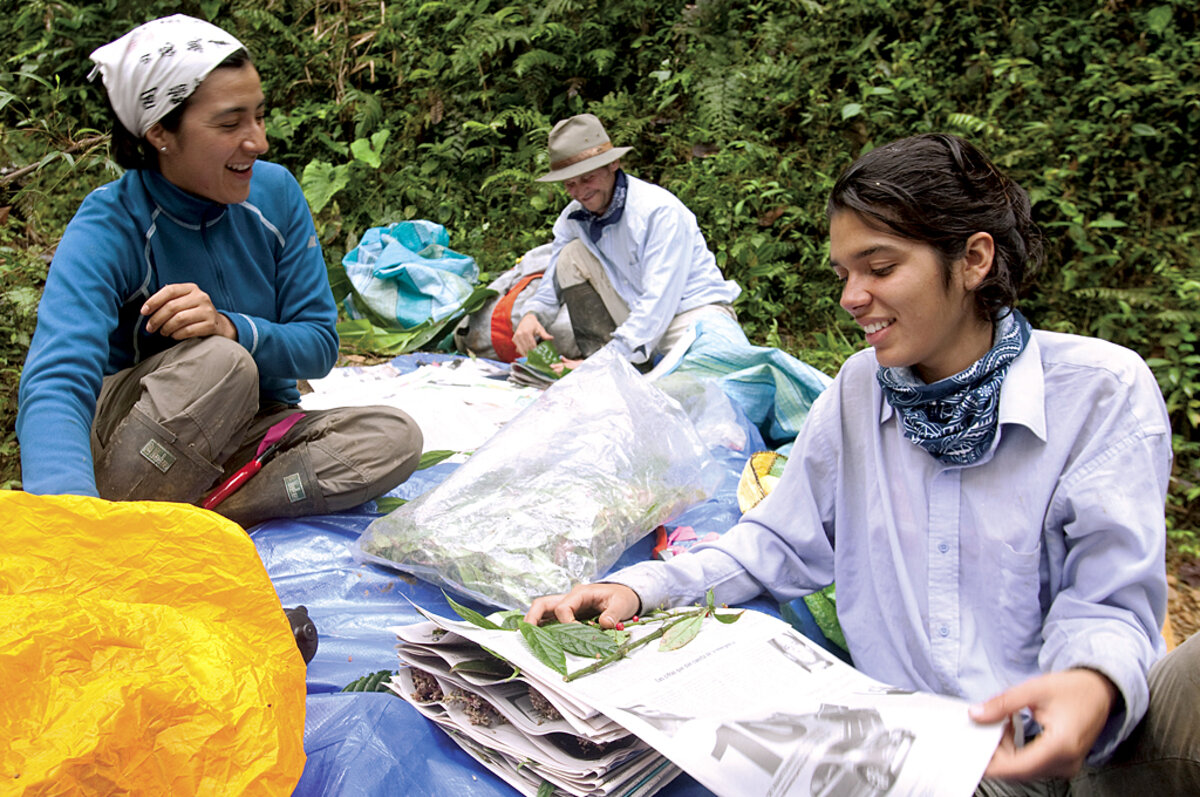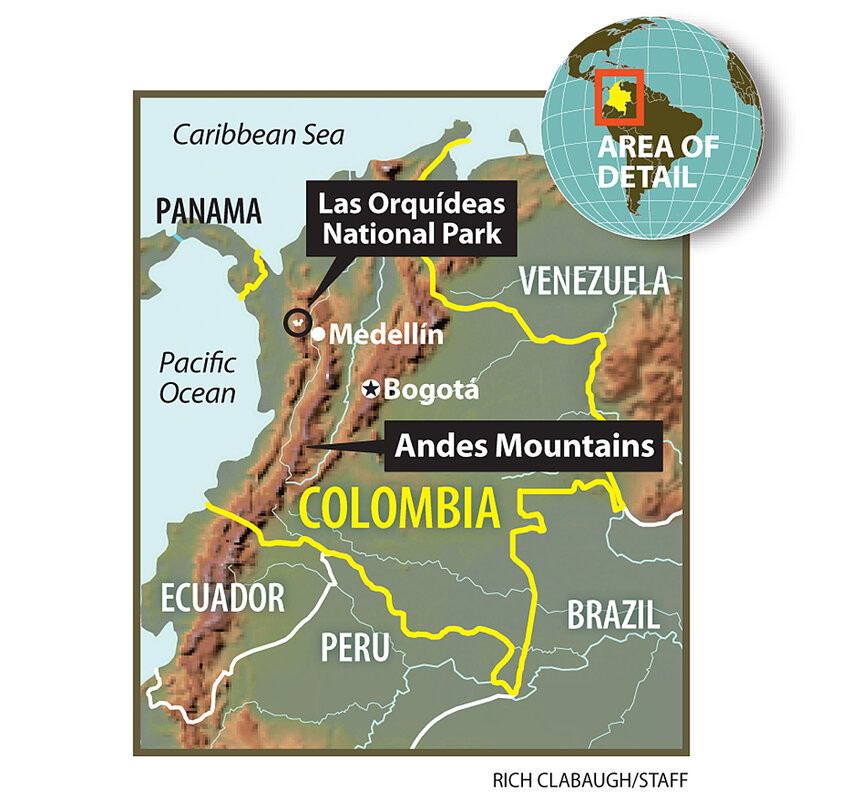New species emerge as rebels fade from Colombia's rainforest
Loading...
| ���Dz��dz�á, Colombia; and New York
A band of humid rainforest hugs Colombia’s Pacific coast, isolated from the rest of South America by the formidable Andes mountain range. Known as the Chocó biogeographic region, it is a treasure trove of biodiversity. And Las Orquídeas National Park, straddling the border between the rainforest and the mountains, is like a jewel in the crown.
Despite the biological bounty of Las Orquídeas, much of it remains unexplored. For 13 years research was all but suspended here because of the presence of illegal armed groups in and around the park. But stepped-up security efforts by the Colombian government have recently made it safe enough for a team of scientists from the New York Botanical Garden and the Universidad Nacional de Colombia to return in a three-year effort to document its ecological riches.
Earlier this month, the researchers returned from their second expedition into remote areas of the park with close to 900 plant specimens – among them are perhaps dozens previously unknown to science. The goal of the project, funded by the National Science Foundation, is to create an inventory of as many plants as possible.
“The tropical Andes is now the top priority for conservation in the whole world,” said New York Botanical Garden biologist Paola Pedraza-Peñalosa, one of the project’s leaders. “It’s far more diverse than the Amazon region, far more endemic species.”
Conservation International (CI) agrees that it is one of the world's most ecologically important and threatened places, having designated both the tropical Andes and the Chocó biogeographic regions as biodiversity hotspots – among the top priorities for conservation in the world because of their combination of high plant endemism and rapid deforestation. But in order to protect them, they must be better studied, according to Erwin Palacios, coordinator for CI’s Amazon region.
“There are black holes of knowledge about our diversity, for the Chocó and for many areas in the country,” said Mr. Palacios. Like Ms. Pedraza-Peñalosa, he believes that if better documented, Colombia could prove to have the highest concentration of biodiversity on Earth.
The Las Orquídeas project is a significant step.
“We have been waiting for the right moment to do this for the longest time,” said Pedraza-Peñalosa.
An ecosystem isolated by violence and threatened by deforestation
Named for the more than 200 species of orchids known to grow within its boundaries, Las Orquídeas lies at the junction of the Chocó and the tropical Andes regions. Rising from lowland rainforest to peaks of more than 10,000 feet, the park’s geographic and climatic diversity make for a wealth of ecosystems that are home to thousands of plants and animals, including many endemic species found nowhere else.
Nowhere in Colombia is there more at stake than in the tropical Andes and the Chocó biogeographic regions.
For decades, Colombia’s armed conflict between the government and rebel groups like the Revolutionary Armed Forces of Colombia (FARC) has impeded research and left huge gaps in the scientific record. Universities were often reluctant to send researchers into the field because of the security risks. Preoccupied with the social unrest, the Colombian government put relatively few resources into research and conservation – even as deforestation ravaged some of the most biologically significant places on earth.
“Deforestation is very, very bad in Colombia, it’s more serious than we realized,” said Pedraza-Peñalosa. “But [conservation] has never been in our language. It's always been security problems, people talking about war. So of course there has never been the time or urgency to talk about this.”
Now, with growing international awareness of Colombia’s ecological importance and the increasing threats posed by deforestation, there is a new urgency to make thorough inventories of the country’s flora and fauna so that they can be better protected.
Finding a balance between conservation and sustainable economy
Getting to Las Orquídeas is not easy. During their first expedition in January, the researchers had to travel into the park seven hours by mule, the only animal capable of navigating the treacherously steep mountain trails. They identified five new plant species, dozens of endemics, and other species not formerly known to exist in Colombia.
On its latest expedition, the team descended deep into a part of the park where tropical rainforest and mountain forest converge near a remote indigenous reserve seldom seen by outsiders – a place of extreme diversity. They collected hundreds of specimens, carefully pressing the plants between thick layers of newspaper to be transported back to Universidad Nacional in ���Dz��dz�á for analysis.
Having an inventory of flora also opens the door for further research on regional fauna, such as the hummingbirds, bats, and insects that may pollinate the plants, said Pedraza-Peñalosa's co-investigator, biologist Julio Betancur of Universidad Nacional.
“This is the first step for us, but there is great potential for the discovery of other groups of plants and animals,” he said.
Pedraza-Peñalosa and Mr. Betancur will share their inventories with the national park system so its staff can better protect endangered species and perhaps develop sustainable economic alternatives for the indigenous peoples and farmers who eke out a living clearing the forest to grow crops. The Colombian government frequently uses the plight of the poor as an argument for developing timber, mining and industrial scale agriculture projects – all of which are associated with deforestation.
But conservation need not be a deterrent to economic growth, said Pedraza-Peñalosa. Instead, she argues that the country now has a window of opportunity to devise stronger conservation plans and determine which plants could be sustainably harvested by local communities.
“What I’ve learned from living in Colombia is you never know what things are going to be like 10 years from now,” she said. “This is a good chance and we should take it.”






